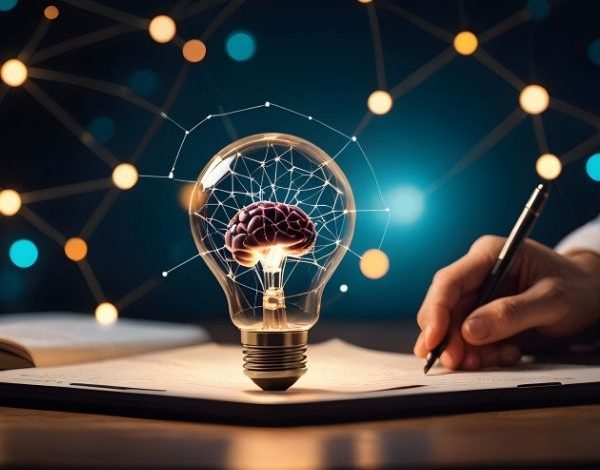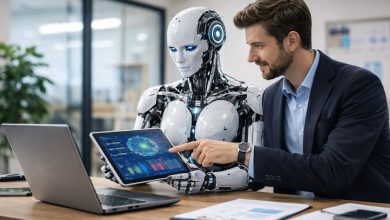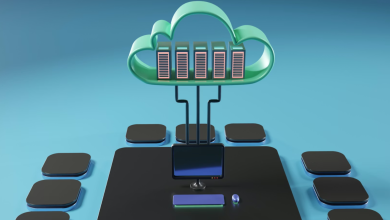
Introduction: From Co-Pilots to Cognitive Partners
“AI is not a tool. AI is work.” When Nvidia’s Jensen Huang delivered those words, he reframed how we need to think about artificial intelligence. For years, we’ve treated AI as something to use — a tool to automate tasks, generate content, or accelerate workflows. But this next phase of AI isn’t about learning the tools. It’s about learning how to think with them.
In the early days of machine learning, I had the opportunity to help train AI models, watching, line by line, as they learned to predict language and mimic human reasoning. It was fascinating to see the systems improve in fluency while still mostly missing the subtlety of human intent. They could follow the structure of logic, but not the spirit of meaning. That experience left me convinced: the future of AI won’t belong to those who master prompts, but to those who master semantics and the art of understanding what people mean, not just what they say.
In today’s emerging “AI factory,” where intelligence itself has become the product, that distinction matters more than ever. My time helping train models offered a glimpse into how machines manufacture meaning — but never quite master it. The next wave of productivity and innovation will depend less on technical proficiency and more on semantic reasoning: our uniquely human ability to interpret context, infer intent, and bring emotional intelligence to collaboration with machines.
Why “AI Literacy” Is No Longer Enough
Today, “AI literacy” has become a buzzword. Every week, new courses promise to make professionals fluent in ChatGPT, prompt engineering, or automation. But proficiency with tools is not the same as understanding how they think. As Huang noted, it’s not about mastering interfaces but understanding intelligence itself and how systems reason, contextualize, and evolve.
In my career (spanning pharmaceutical sales at a multinational company, business development for a psychiatric hospital, and heading up digital marketing at a biotech company) I’ve watched technology repeatedly outpace human understanding. We rush to learn the interface before we’ve learned the intent.
That gap between input and insight is exactly what behavioral scientist Dr. Renée Richardson Gosline emphasizes in her enlightening course at MIT – Breakthrough Customer Experience. Her research highlights that the real challenge isn’t teaching people to use technology but rather teaching them to interpret it. To recognize the semantics of human behavior, not just the syntax of data.
Whenever I consult with healthcare organizations on growth marketing and AI adoption, this distinction defines success. Whether optimizing a digital campaign or developing a healthcare product, progress depends on understanding user intent, not merely user behavior.
My time studying digital business at MIT has reinforced a simple truth: literacy alone can’t keep pace with exponential change.The future belongs to those who combine logic with empathy, analysis with narrative, and data with discernment.
| Old Model | New Model |
| Tool training | Contextual reasoning |
| Syntax | Semantics |
| Inputs | Intent |
| Output-based work | Meaning-based work |
In this new paradigm, understanding why something works matters more than knowing how to operate it. The next generation of leaders will need to think like linguists, psychologists, and strategists, not just coders.
The Linguistic Core of AI: Semantics and Reasoning
Having helped train AI models in their early days, I saw firsthand how they “learned” language, not by understanding it, but by predicting it. A large language model doesn’t see the world the way humans do; it calculates probabilities. It knows that the word “heart” is likely to follow “open your,” but it doesn’t know what it feels like to have it broken.
This is where semantics — the study of meaning — becomes the next great frontier of human–AI collaboration. AI can analyze, but only humans can contextualize. We bridge emotion, ethics, and creativity in ways machines can’t replicate. We don’t just string words together; we create moments of meaning.
Think of the unexpected imagery in Benson Boone’s lyric “moonbeam ice cream,” or the dark humor of Taylor Swift’s line “sitting in a tree, D-Y-I-N-G.” These lines resonate because they surprise us as they come from lived experience, not pattern recognition. They connect emotion to metaphor in ways statistics can’t produce; AI might replicate the rhyme, but never the raw emotion.
My background in English Literature taught me to pay attention to subtext, carefully considering the spaces between the words. Shakespeare’s “full of sound and fury, signifying nothing” is powerful precisely because it’s ambiguous. It forces interpretation. That human act of weighing nuance, tone, and resonance is something that machines can simulate statistically, but not exactly experience themselves.
In cognitive psychology, this distinction aligns with Theory of Mind — our ability to recognize that others have independent thoughts and emotions. AI can detect linguistic patterns that correlate with empathy, but it cannot experience empathy itself. That’s the difference between correlation and comprehension. The future will belong to professionals who know how to bridge that divide, aligning machine output with human meaning.
Cognitive Resilience: The New Workforce Advantage
Psychology has long explored how people adapt to change. Each technological revolution, from the printing press to the personal computer, has forced us to rethink not only what we do, but also how we think. What’s different now is that machines are learning to reason while humans risk forgetting how.
Automation is advancing faster than cognition. We outsource memory to devices, decision-making to dashboards, and creativity to code. But as AI takes over routine execution our ability to reason, reflect, and represent ideas meaningfully rises exponentially.
I call these the 3Rs of the AI Workforce:
- Reasoning — The capacity to connect ideas across systems, question assumptions, and think critically amid uncertainty.
- Reflection — The metacognitive skill of examining one’s own thinking and identifying bias (both human and algorithmic).
- Representation — The ability to translate human goals into computational language without losing empathy or nuance.
Together, these skills form a kind of mental durability that keeps humans central even as automation accelerates. These are the same qualities Huang described as human-centered intelligence: emotional intelligence, ethical judgment, creativity, and cross-domain synthesis. AI sees data; humans see meaning.
The AI-era workplace will value judgment and insight over repetition and see value measured in meaning, not just output.
Biotech and Healthcare: When Semantics Can Save Lives
Nowhere is semantic reasoning more consequential than in healthcare. Every word, phrase, or data point carries life-or-death implications. A single misinterpreted term in a patient record can shift a diagnosis, delay treatment, or erode trust.
At the biotech company where I work, we’ve been developing a digital therapeutic for musculoskeletal health. I’ve seen how AI can analyze unstructured sensor data and clinical notes to identify patterns of pain and recovery. But when semantics are off, even the best algorithms can misread the story. An AI may interpret “tolerated exercise” as success; while a clinician may read it as “barely managed.” Without shared context, both humans and machines lose meaning — and patients lose progress.
Across biotech and pharma, language models now help draft clinical documentation, interpret labs, and personalize patient communication. Yet these systems are trained on form, not intent. Without domain-specific reasoning, AI can produce fluent but clinically hollow narratives.
The opportunity is profound: by designing models that understand context, tone, and intent, we can close the empathy gap between providers and patients. Precision medicine isn’t only about genomes; it’s about semantics — ensuring that words, data, and meaning align to support healing. In healthcare’s emerging AI factory, the true product isn’t a model or an algorithm. It’s trust.
The FutureWise Mindset
If the last decade of digital transformation was about learning new tools, the next will be about learning new ways to think. The age of “AI literacy” is giving way to something deeper: AI fluency, where professionals understand not just how to use technology, but how to reason with it.
This shift is the foundation of a new learning framework I’ve been developing around human-AI collaboration. It was born from the realization that across industries, we’ve been teaching tools, not thinking frameworks. We’ve optimized for speed, not semantics. The future depends on cultivating reasoning, reflection, and representation, the human skills that make technology meaningful.
As Huang emphasized, the future of productivity is human + machine, not human vs machine. “Human-In-The-Loop”. The most future-proof professionals won’t be those who write the cleverest prompts or automate the most tasks. They’ll be the ones who understand why an algorithm works, when it shouldn’t be trusted, and how to translate human goals into machine logic without losing empathy or ethical clarity.
AI doesn’t replace our humanity — it reflects it. It challenges us to articulate what we value, what we mean, and how we choose to reason. The future of work won’t belong to those who master machines. It will belong to those who master meaning.




